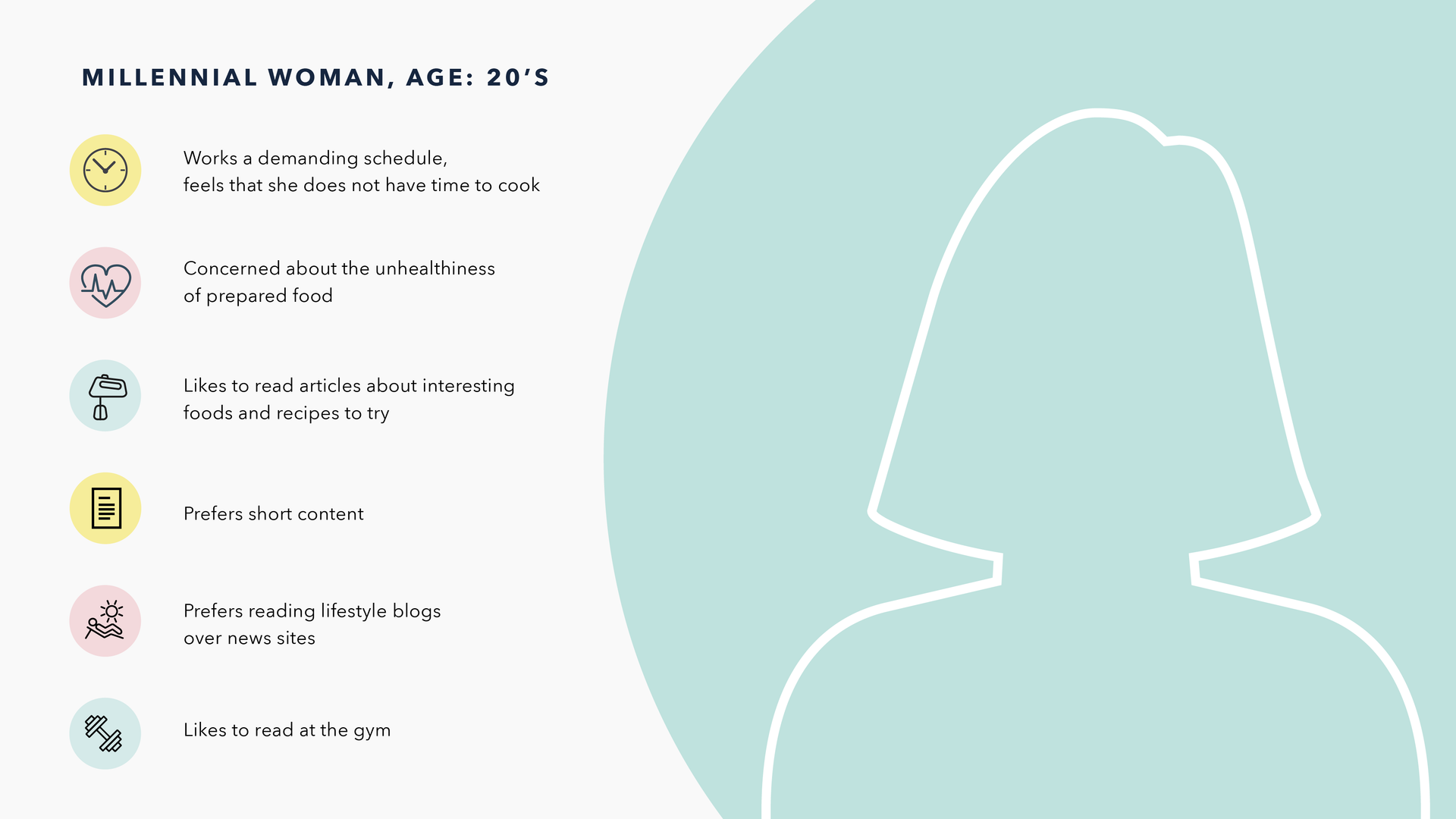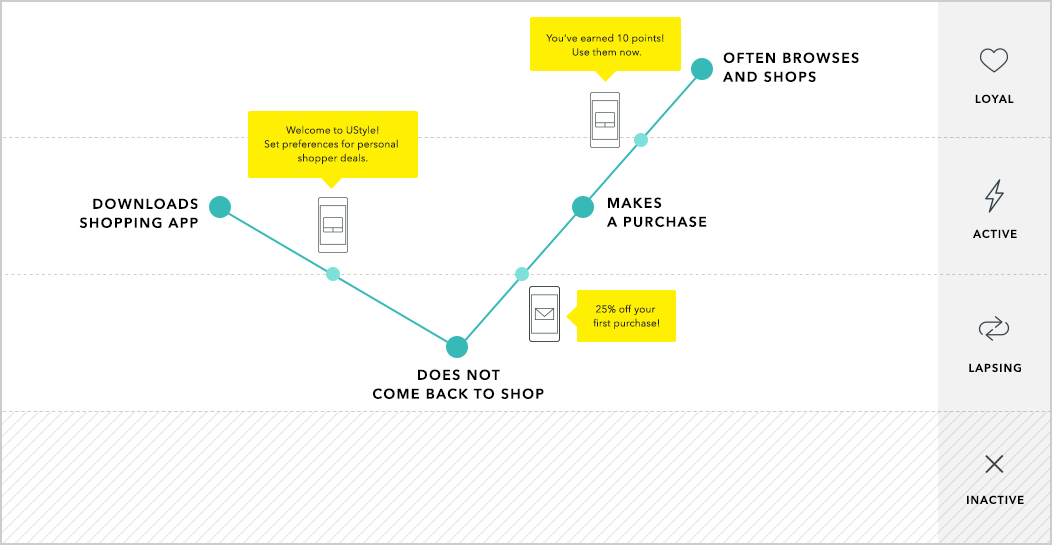The New Rules of Writing for Mobile Audiences
Published on August 03, 2016/Last edited on August 03, 2016/8 min read


Team Braze
Let’s face it: writing copy for short mobile messages is a challenge disproportionate to the length of what you’re creating. In other words, it’s pretty darn tough to do well.
You have a split second to capture your reader’s attention. You have a limited view into what your customer is doing on the other side of the screen—if they’re getting your messages at the gym, while cooking breakfast, or en route to work, for instance. So how do you write for these uncertain contexts? And how do you write copy that’s compelling enough to win your audiences over?
Let’s break these questions down into a series of research-driven steps. Here’s a framework to guide your quest for more impactful, engaging copy.
Step one: Define your personas
“Whenever you want users to take an action in your app, you need to think about what’s in it for them. The better you understand them and their needs and what they care about, the more effective you will be at creating calls to action that drive them to use your app or give you a great rating in the app store.” – Heather Morgan, CEO at Salesfolk
As a marketer, you already know that great writing isn’t about the author—it’s about your audience. That’s why so many marketers, when they create content, imagine that they’re writing to a real person. This profile embodies the traits of their target audience. At a minimum, you’ll want to create a customer persona (or several) that includes the following:
- Details about the person’s cultural or family background, as the information pertains to your company and product
- Details about the person’s job title, income, and other relevant decision-making factors
- Information about the person’s interests and values
- Details about the person’s end-goals with your company and product (what is the problem that you can solve for them?)

Example of a marketing persona
How do you get to these personas? Research. Here are some steps to take:
- Conduct one-to-one interviews with individuals in your target audience. You can source these individuals by reaching out to your existing customer base, reaching out to potential users through channels like LinkedIn, or emailing your subscriber list to see who might be interested. If you’re looking for a guide to using remote tools for customer development, check out this video from the 2014 Lean Startup Conference.
- Take a look at user behavior patterns with a usability testing and research tool that gives a direct lens into app or website use. One example is UserTesting.com, which will give you a video of users engaging with your app (bonus points: UserTesting will help you build a tester/participant panel). How do different demographics or other groups differ in their interactions with your brand, and what does that say about their major concerns and needs?
- Create segments of your customers within your CRM (for example, people who’ve made many purchases and people who made one but haven’t returned), and look for patterns in their other attributes and interaction data. You’re looking for similarities that might tell you why some customers become loyal and why others need more coaxing. Where are the not-so-engaged customers getting stuck? Can you speak to that issue?
- Now, group your findings into a couple discrete personas. The key is to have a real person in mind when you’re writing any one message. You may even want to imagine specific people in your CRM.
With a mix of qualitative and quantitative research, you’ll have a strong understanding of who your users are, what they care about, and how to write for their needs as a result. With this information in hand, you’ll be able to focus your copy to the key points that your audiences care about.
Step two: Diagram your customer lifecycles, by persona
“Focus is essential to ensure every word-choice made on your mobile site is done with purpose. Understanding how your customers are using mobile to research and shop will help your team cater to their needs and adapt your copywriting strategy accordingly. Review your analytics, offer a survey or simply ask customers how they use mobile to get a better grasp of what needs to be said.” – Brian Honigman, CEO at Honigman Media
You know how the famous marketing saying goes: your job is to “reach the right audiences with the right messaging, at the right times in their buying journeys.” That’s why knowing your audiences may not be enough. You also need to know if they’re just starting to understand your brand’s value or if they’re on the way to being an evangelist. Here’s how to make sure that you’re reaching your audiences at the right time:
- Create a list of interactions that your customers are likely to go through, in no particular order
- Follow this tutorial to diagram these interactions based on your customer data
Now, you should be ready to build out your messaging layer. Take a look at the nodes you’ve created on your customer lifecycle map, and strategize what the messaging takeaway should be. Here’s a hypothetical example:

Knowing your customer lifecycle will help you plan your copy, down to the very last detail. By understanding what your customers are likely to be thinking or feeling in the moment, you can choose words and write in a tone that coaches them along more effectively.
Step three: Prioritize the rule of one
How do you make sure that you’re providing guidance toward a focused call-to-action (CTA), without being overwhelming? Remember the rule of one: make one point with every communication, with just one CTA.
Two years ago, Laura Klein, a UX design and research expert who specializes in helping startups build customer-friendly products, gave an interview that explains why this step is so important:
“Mobile experiences are often a series of micro interactions—quick tasks that the user performs, often in a highly distracting, public environment using a very small screen,” explains Klein.
Instead of making one big “ask” in your copy, try making a series of smaller ones across several messages that that align with your user’s lifecycle stage.
By keeping your copy focused, you’ll alleviate any potential for ambiguity and friction.
Step four: Write your message
“Before you dive into crafting creative copy, develop a style guide that sets parameters on what you can or can’t say and how long each mobile message should be. With a bit of planning, your mobile marketing strategy can be a lot more cohesive — instead of haphazard — which will resonate well with your audience.”–Danny Wong, co-founder at Blank Label
Now, it’s time to take all of your research and craft compelling, engaging messages. At a minimum, you’ll want to make sure that your messages have the following characteristics:
- Focus. Ensure that your message comes across in a direct way. Leave less to the imagination, so your audiences know exactly what you mean.
- Personalization. Look for ways that you can make your messages more tailored to each individual user. For instance, you can address your users by name, and mention products that they’ve viewed before or app features they like to use. Personalizing a message with attributes like first name, recent purchases, or other interaction data can increase conversions by 27.5% compared to generic notifications. Give your audiences a reason to want to read your copy.
- Visual appeal. Consider making your messages more impactful with some strategically placed and attention-grabbing visuals. If you’re reaching iPhone users with a push notification, for instance, you can incorporate emoji. If you’re reaching Android users on push, you can also include a compelling image to complement your copy.
- Relevant voice and tone. What’s equally important to what you’re saying is how you’re saying it. Should you be funny? Should you be casual? Your research from steps one and two should help you make the judgment calls you need to answer this question. Know who you’re writing to and why you’re writing to them to get your voice and tone right. Simple trick: imagine that you’re having a conversation in real life. How would you frame your conversation?
A continuous process: Test, optimize, and iterate
As you try new messaging, you’ll generate a wealth of insights: the data that you start to collect will introduce new opportunities for refinement. Ask yourself with every decision, “how can my messaging be better?” Actively seek out opportunities to test new strategies and tailor your messages even more. Here are some elements you can test:
- Tone (e.g. friendly, smart, conversational, direct)
- Image options (testing image types, comparing messages with or without an image)
- Calls to action (e.g. testing “learn more” vs. “click to buy”)
- Word choices (e.g. slang, formal language)
Your messaging is an evolving part of your marketing, so keep testing new ideas as you learn more about your audience.
Releated Content
View the Blog
A day in the life of a data scientist on the BrazeAIᵀᴹ forward-deployed engineering team

McKay Jensen

The new inbox reality: How iOS changes are reshaping email marketing

Aparna Prasad

Experience optimization: Turning data insights into better journeys
